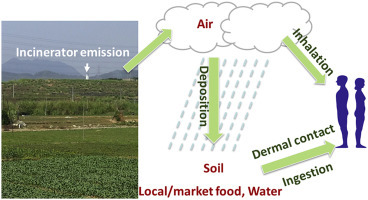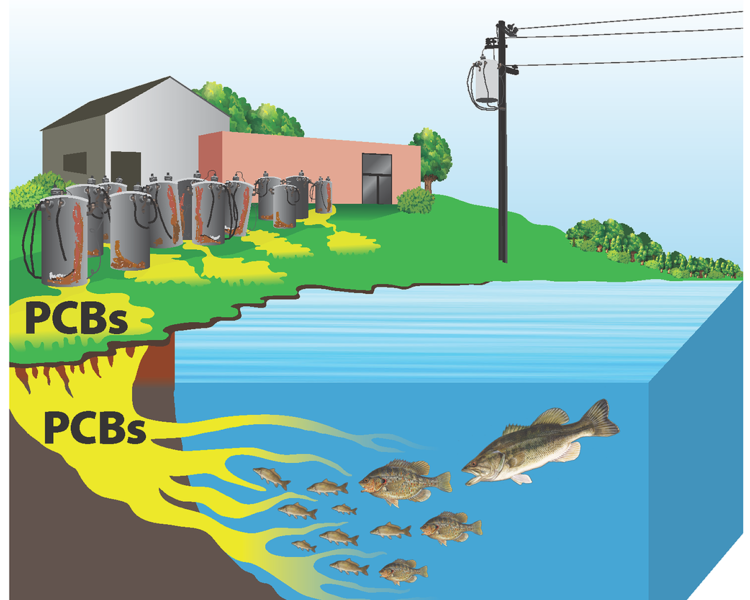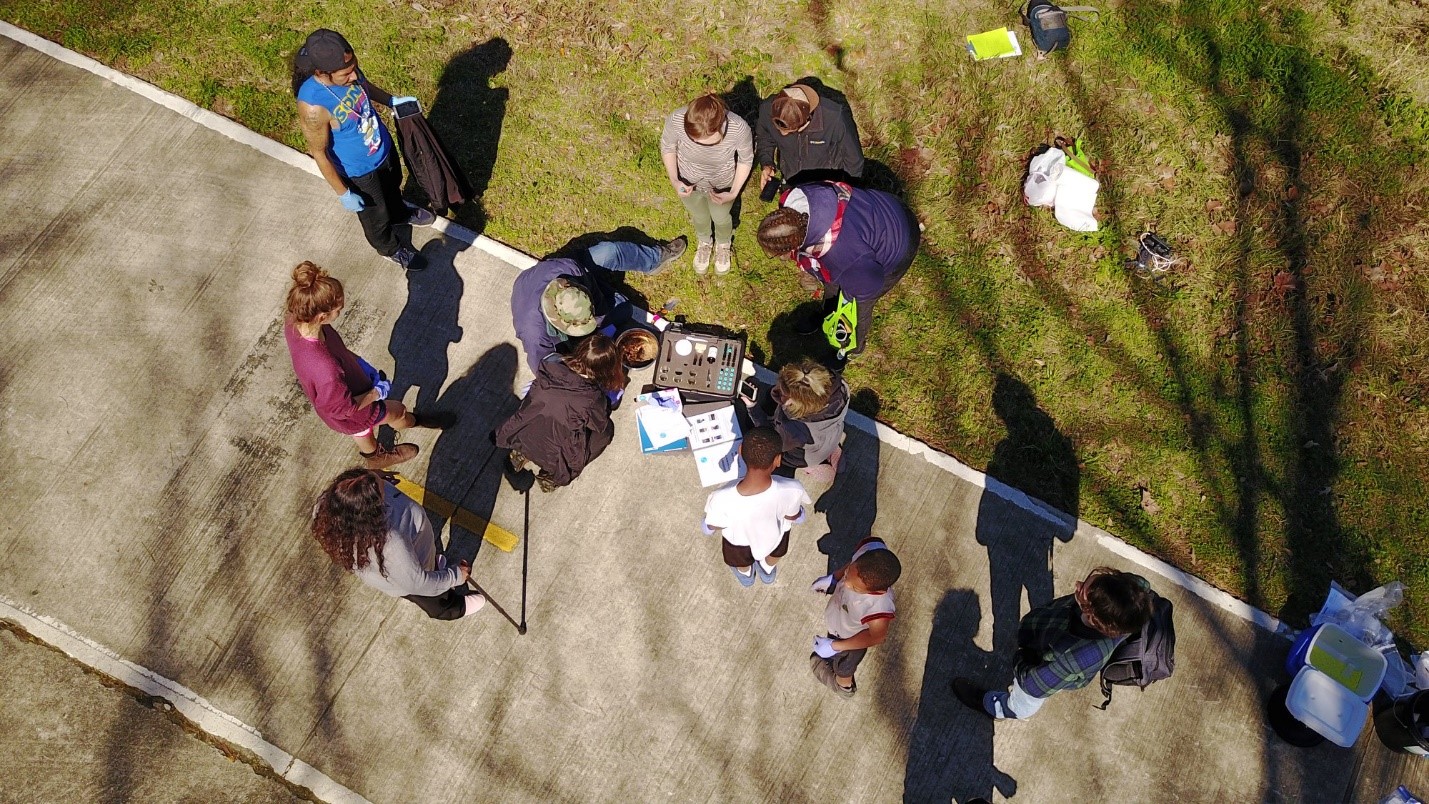A soil contaminant is an element (also known as ‘heavy metals’ or inorganic contaminants, e.g. lead) or a chemical (also known as ‘organics’, e.g. diesel oil) present in the soil at a level that poses health risks to plant, animal or human health. Common soil contaminants include PCBs, PAHs, petroleum products, heavy metals and pesticides.
This page is a place to collect and organize resources on investigating soil pollution. Visit the [soil tag page](https://publiclab.org/tag/soil) to see the latest community posts about soil on Public Lab, and get updates on this topic by subscribing:
Subscribe to soil
## On this page:
- [Questions people are asking related to soil ](https://publiclab.org/wiki/soil#Questions+people+are+asking+related+to+soil)
- [Information on soil contamination](https://publiclab.org/wiki/soil#Information+on+soil+contamination)
- [Activities for understanding your soil](https://publiclab.org/wiki/soil#Activities+for+understanding+your+soil)
****
## Community stories and projects
## Join the conversation
### Questions from the community
+ See if other community members are asking questions like yours
+ Ask a question so other community members can offer support
+ Sign up below to be notified when someone asks a soil-related question
Questions tagged with `question:soil` will appear here
[questions:soil]
### Information on soil contamination
**Where does soil contamination come from? **
_We can be exposed to contaminants through the soil through:_
- **skin contact**: dermal exposure-e.g. pesticides
- ** inhalation**: breathing in dust- e.g. asbestos, lead; and/or contaminants that vaporize from soil-e.g. benzene
- **ingestion**: eating of dust and soil through hand-to-mouth and to a lesser extent through eating foods grown in contaminated soil as some can uptake heavy metals
[](/i/29974)
With exposure to any contaminant, the likelihood that health effects will occur depends on how harmful or toxic the contaminant is to humans, how much you are exposed to, and for how long and often you are exposed.
Contaminants in soils can come from historical industrial activity, past and present land use, nearness to pollution sources (i.e. a major road, a coal plant) and natural disasters.
_Contaminants can end up in your soil through:_
- the **air **(from dust & exhaust)
- **water** (from rain & groundwater & runoff from a nearby site)
- **direct deposition** (from on site (e.g. Pesticide application, burning garbage, or nearby polluters).
[](/i/29973)
**Why test the soil for contaminants?**
People test their soil for contaminants for a range of reasons:
- To see if the soil is safe to grow food in and/or reduce risk of exposure to contaminants through existing or future farms and gardens.
- To see whether contaminants may have been or are being deposited on your site through runoff (water) or air from nearby busy roads or polluting industries.
- To see what the contaminants may have been left behind on the soil after a natural disaster such as flooding or fire, or a chemical spill.
- To see whether remediation efforts are working.
Also see this great overview by [Toxics Action Center](https://toxicsaction.org/resources/statistics-for-action/soil-water-testing/)
****
### Common Soil Contaminants to be aware of:
#### Heavy metals
Heavy metals are those elements which are toxic to humans at certain concentrations, including:
- arsenic
- copper
- lead
- mercury
- nickel
- chromium
- cadmium
- zinc
- aluminum
- manganese
- barium
- molybdenum
[](/i/29972)
Some of them, like zinc and copper, are necessary or beneficial to living organisms in small concentrations but are toxic above a certain concentration; others, like lead, cadmium and mercury, serve no known biological function and are always toxic. Heavy metals are naturally occurring, found in rocks, soil systems and bedrock, and in some places a certain metal may be naturally present in higher concentrations (such as arsenic in New York State).
The majority of heavy metal contamination arises from human activity– metal mining and smelting, agrochemical fertilizers and pesticides, sewage sludge, oil and gas operations and fossil fuel burning, improper waste disposal, and fill used in residential development. Unlike organic contaminants, heavy metals cannot be broken down, so the they keep building up in soils. But their characteristics may change so that they can be more or less easily taken up by plants or animals.
#### Organic Chemicals
Organic contaminants are carbon-based, meaning they are derived or manufactured from something that was once alive, for example, oil and gasoline, which is the remains of plant and animal matter that was compressed for millions of years, then pumped out of the earth and processed. Polyaromatic Hydrocarbons (PAH’s) and other petroleum hydrocarbon contaminants, solvents like trichloroethylene (TCE), dioxins, chemical pesticides, and Polychlorinated Biphenyls (PCB’s) are a few organic contaminants of note. They can be present in soils, particularly on or near historical or present-day oil and gas industry, auto and machine repair shops, old or leaky oil tanks, busy roads or highways, landfills and dumps, beneath electrical stations and wires, and places where there were building fires or demolished buildings.
#### Polycyclic Aromatic Hydrocarbons
PAH’s are a byproduct of incomplete combustion, and are released when fossil fuels are burnt. They are common in soils along busy roads due to vehicle exhaust, and are associated with coal burning power plants, forest fires, and road sealants. Other sources of PAHs include wood burning stoves and oil spills. There are more than 15 different types of PAH’s. Some PAHs are known to be cancer-causing, or carcinogenic. They have also been associated with respiratory illnesses. In soils, PAHs are likely to stick tightly to soil and organic matter particles; though certain PAHs move through soil to contaminate underground water or volatilize into the air.
[](/i/29971)
#### Poly Chlorinated Bisphenols
Though they were banned in 1979, they are still present in the environment
because they are highly persistent (do not readily break down) and can leak from landfills where they have been disposed of and from products that were made before the ban. They were used broadly in the electrical and building industr[](null)ies, and so are common in soils beneath electrical transformers and capacitators, flooded areas, and soils where buildings have been demolished. Since they don’t really break down, and bind to fats, they end up in our water and in our fish and seafood. So it’s especially important to know if they are present in places where people fish!
[](/i/29970)
**You can read more about each specific contaminant through the Agency for Toxic Substances and Disease Registry’s 2 page fact sheets, called Tox FAQ’s: [https://www.atsdr.cdc.gov/toxfaqs/index.asp ]**
## Research soil contamination
The Public Lab community is here to support people as they plan and carry out investigations into their soil. Anyone can[ ask questions](https://publiclab.org/wiki/sandbox-soil#Questions+from+the+community), start an [issue brief](https://publiclab.org/wiki/sandbox-soil#Post+an+Issue+Brief) with any amount of information available, or start [documenting a project](https://publiclab.org/wiki/projects), and gather input from other Public Lab members.
### Some places to start
Here are some activities for getting started with examining your soil. They involve gathering information that can help you make decisions about what to do next.
[notes:grid:activity:getting-started-soil]
### Soil testing methods
This [spreadsheet lists several different soil testing methods and tools](https://docs.google.com/spreadsheets/d/1dPla3jTr2D_FIBexqd_zKLYyyoA0PgTgH40Xy_3MtPY/edit#gid=0), the contaminants they can detect, information on how to use the method, the cost, and more. Please share any knowledge or experience you have with these methods by adding to the spreadsheet!
#### Methods for screening purposes
These soil testing methods use different approaches to screen for contaminants. In general, the data these methods produce are less accurate and precise than certified lab-based methods, but the methods are more accessible in terms of materials, cost, and logistics.
##### Screening for heavy metals and organic compounds
**Overviews on Public Lab**
[nodes:grid:screen-soil]
**Example tools**
**Hanby Field Test Kit**
 + _Tests for_: Organic contaminants (petroleum products, PAHs, PCBs)
+ _Advantages_: Tests can be done quickly in the field; relatively low cost per sample.
+ _Limitations_: Can be difficult to compare color if the sample is dark; other petroleum compounds might interfere with color changes and lead to inaccurate results interpretation. See more in this comment by @jjcreedon.
[nodes:hanby-soil-kit]
+ _Tests for_: Organic contaminants (petroleum products, PAHs, PCBs)
+ _Advantages_: Tests can be done quickly in the field; relatively low cost per sample.
+ _Limitations_: Can be difficult to compare color if the sample is dark; other petroleum compounds might interfere with color changes and lead to inaccurate results interpretation. See more in this comment by @jjcreedon.
[nodes:hanby-soil-kit]
**[Nuestros Suelos: a low-cost toolkit for the participative assessment of soil degradation](https://publiclab.org/notes/sureta/01-09-2020/nuestros-suelos-a-low-cost-toolkit-for-the-participative-assessment-of-soil-degradation)**
+ _Tests for_: indicators of fertility (organic matter, carbonates, N-P-K, and pH) and presence of heavy metals (copper and arsenic).
**Portable X-ray fluorescence (XRF) spectrometer**
+ _Tests for_: Metals.
+ _Advantages_: Tests are relatively non-destructive and can be done quickly in the field with portable or handheld units; high cost to purchase but options to rent units can lower costs relative to testing via lab analytical techniques.
+ _Limitations_: It might not be sensitive enough to detect metal concentrations that are relatively low but still above regulatory levels for toxicity (from [EPA Method 6200 doc](https://www.epa.gov/sites/production/files/2015-12/documents/6200.pdf)).
[nodes:xrf]
**Other methods**
[Question:What are other ways to assess soil contamination, besides directly measuring contaminant concentrations?](https://publiclab.org/questions/bhamster/02-05-2021/what-are-other-ways-to-assess-soil-contamination-besides-directly-measuring-contaminant-concentrations)
##### Measuring effects of contaminants (toxicity)
The screening methods listed above indicate relative or real amounts of a contaminant in a soil sample. But the amount of a contaminant in the soil doesn’t always translate into a predictable effect on living things. To learn about the potential for harmful impacts from contaminated soil, some people complement typical soil testing with tests for toxicity or “effect-based” tests.
[wikis:effect-based-test]
#### Certified / regulatory methods
##### Understanding and interpreting soil test results
[wikis:interpret-soil-tests]
### Activities for understanding your soil
Activities on Public Lab that have been tagged with `activity:soil` will appear here
[activities:soil]
## Soil remediation
Soil remediation involves cleaning up or containing polluted soils. There are many different ways to reduce exposure to contaminated soils, and remediation methods vary in how effective they are and how much they actually reduce the problem or simply move the problem from one place to another.
[wikis:soil-remediation]
## Further reading and resources
### Wikis on soil
[wikis:soil]
## Current Challenges:
Several areas for potential development on soil testing and monitoring work include:
- Find and share information on way to biologically test for soil contaminants that's analogous to macro-invertebrate testing for water. Possibly soil microscopic life? Also known as bio-assays. Earthworms are known to be pretty good indicators of toxicity but more info and experimentation is needed so that this could be applied by communities.
- Identifying ways to reduce lab cost for sampling that requires lab testing (for eg., mass spectrometry for validity and reliable data). Partnering with university labs' is one way, or advocating for agriculture extension offices to provide subsidized testing. Do you have other ideas?
- Play with the DIY spectrometer and build up a database to compare with for each toxic metal and organic contaminant at different concentrations. Create a color chart based on the database with many replicates (people trying it out) to compare the colors shown from reaction with each metal and contaminant of concern.
- Figure out which reagents are effective for DIY colorimetric /spectrophotometric tests for soil contamination, and how to produce them.